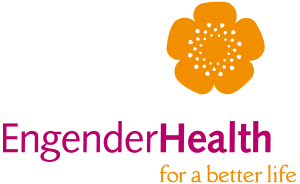By: Simon Ndizeye, former Monitoring & Evaluation Program Associate, FC+ Uganda
Rashid Byaruhanga lives in Buyanja village, located in the Hoima District of western Uganda. He lives with his wife and four children in a mud and wattle house about five kilometers from the small Buraru Health Center. In this rural area, the main sources of livelihoods are small scale crop farming, rearing of domestic animals, and selling or trading goods at the market.
Although he is a driver by profession, Rashid understands very well the health problems that his community grapples with. Among them, he mentions high rates of teenage pregnancy, HIV, and malaria cases as well as childhood illness, drug abuse, and poor hygiene and sanitation. A few of years ago, he was elected by his community in a village meeting to become a a member of the Village Health Team (VHT) — a role he gladly embraced.

“I agreed to become a VHT so that I can serve my people. I am like a bridge between the village and our health facility”
Rashid says that he first became interested in community health work when he escorted his wife to give birth at a health facility. He says that the experience helped him recognize the difficulties that women go through during labour and delivery. He also added that the experience strengthened the bond between him with his wife, and that he would love every man to become involved in maternal health issues.
In 2014, Rashid was one of the 155 VHTs in Hoima district selected to attend a maternal health training organized by Fistula Care Plus, a USAID-funded project of EngenderHealth, and the Uganda Ministry of Health (MOH). The training equipped them with the knowledge and skills to promote healthy practices, including family planning, fistula prevention and treatment, male involvement in maternal health, birth preparedness, and the importance of utilizing antenatal care, postnatal care, and safe maternity services.
All trained VHTs were provided with bicycles, t-shirts, raincoats, gumboots, teaching aides including flip charts and posters, and bags to facilitate their community work. Over the last 18 months, they have sensitized 25,274 community members on maternal and reproductive health topics. EngenderHealth, in collaboration with MOH, has also provided regular supportive supervision to the VHTs in the catchment areas of supported health facilities, and organized quarterly meetings that bring VHTs together to reflect on progress made and lessons learned in mobilizing communities.
A national VHT assessment study conducted by MOH and partners in 2015 showed that there are 179,175 village health workers spread across the country. Uganda adopted the VHT strategy in 2001, which ensures that every village five VHT members who work together to mobilize the community for better health and refer individuals to health facilities. VHTs serve as the first stop center for communities in their search for healthcare, relay basic health information to their communities, and also improve access to facility-based health services through referrals.
Rashid says that he regularly conducts home visits and community sensitization sessions where he speaks about a range of topics and refers those in need of services to the nearest health facilities. He says that using flip charts helps him to remember to communicate the key health messages easily.
“I was given charts, which I use while teaching people. I like the charts because they help me remember the key messages…..even at times when I am not good at explaining, the audience will pick the information [through the images].”
Rashid says that he also reaches out to fellow men, encouraging them to support their partners on maternal health issues including preparing for birth and escorting them for family planning, antenatal, delivery, and postnatal care.


